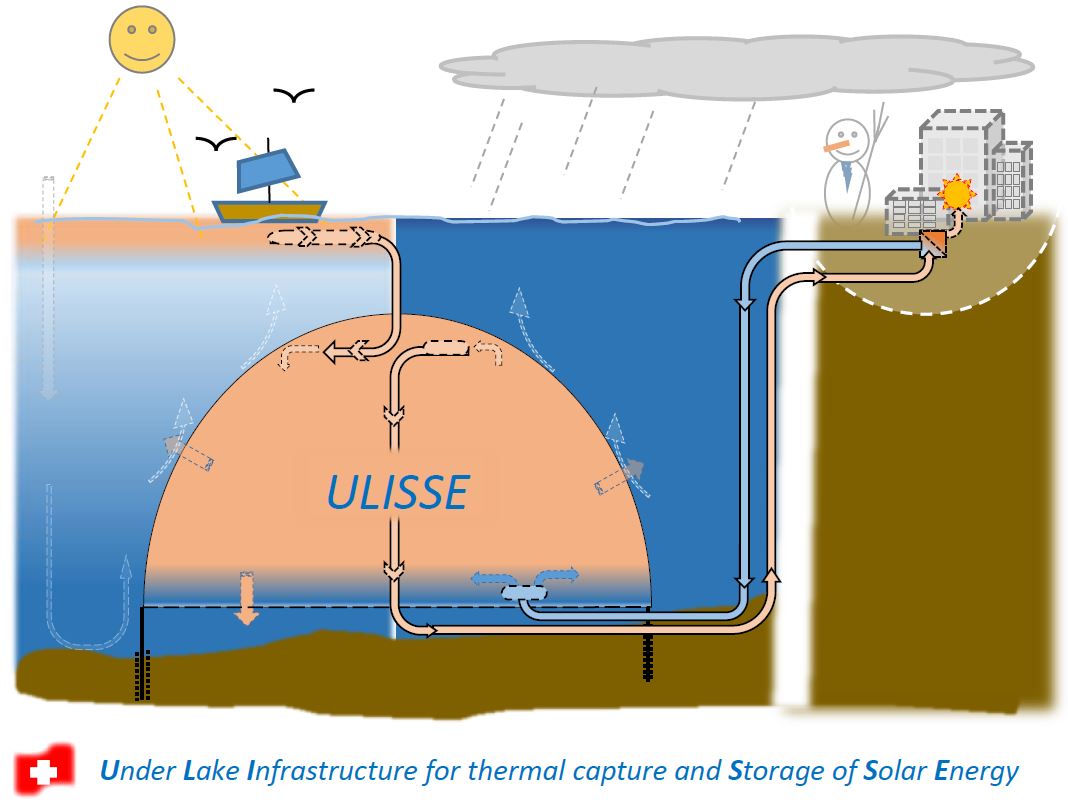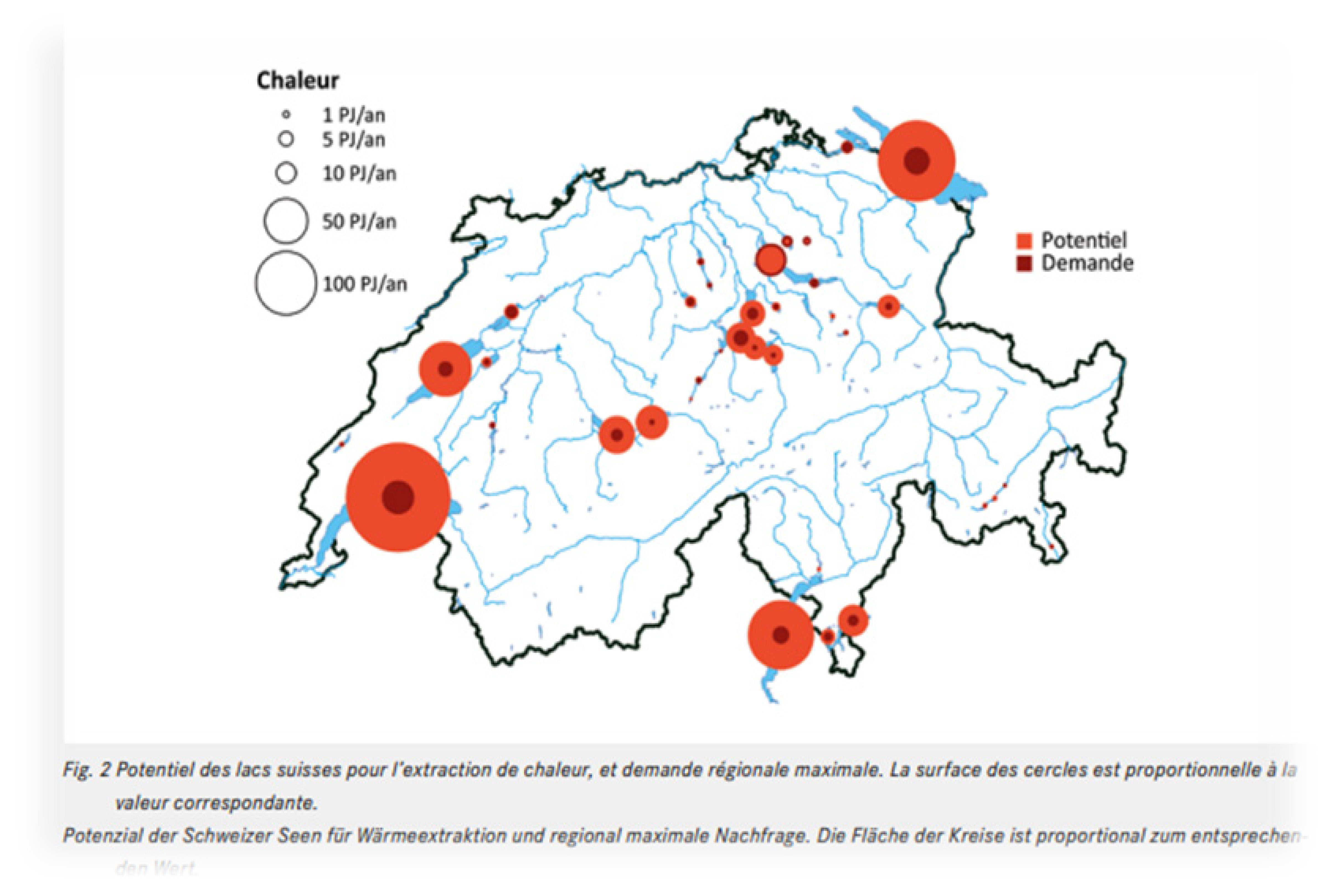A real "SWEET Outside-the-box Rethinking" (SOUR) project
The project ULISSE (Under Lake Infrastructure for thermal capture and Storage of Solar Energy) aims to improve the performance of hydrothermal networks with heat storage. In summer, heated lake water would be pumped into reservoirs at the bottom of a lake.
The ULISSE concept proposes an invisible underlake anchored very large heat storage reservoirs for seasonal capture and storage of solar thermal energy (units of 2 million m3 & 120 TJ @ dT = 15 K). A “hydraulic pantograph” captures hot water from the upper layer of the lake heated by the summer sun.
The loading pumps are supplied with photovoltaic electricity, reducing peak-shavings (grid-overloads curtailment). ULISSE can also complementary recover and store waste heat from cooling services.
Good seasonal net heat storage efficiency (> 80%) with a limited thermal isolation thickness could be achieved with a large ratio between the volume and the surface of the reservoir envelope (made of biocompatible mineral fiberglass textile and 5 cm foamglass).
Furthermore, the heat loss would induce vertical convection currents outside the ULISSE reservoir over the entire water column of the lake. It could enhance nutrients circulation and the oxygenation of the bottom layer of the lake, which ultimately protects against Eutrophication and Asphyxia, the harmful effects of Global Warming of all the lakes (Not only Alpine glaciers are threatened!).
In winter, ULISSE increases the temperature of lake water pumped from the ULISSE reservoir to the heat pumps via the Thermal Lacustrine Networks (TLN) as a heat source by about 15 K (from 5 to 20 °C). This will boost the COP of the heat pumps by +40% to +60%. In addition, the five times higher water thermal density (12.4 to 62.7 MJ/m3) reduces the hydraulic flow rate (-80%) and thus the energy for pumping and circulating the water in the TLN (-95%, proportional to the square of the flow rate).
The ULISSE reservoir could also supply the CORSAIRE “free-heating” (winter temperature correction without heat pumps) of the (existing) Potable Water Networks (PWN), reducing up to 10% the total heat demand of a current entire city’s building stock without any internal needed equipment.
In 2050, about 300 ULISSE Reservoirs distributed invisibly in the 15 large Swiss lakes and connected on the TLNs, in association with the CORSAIRE free heating of the PWNs (including also outside the lake regions), could provide nearly 60 PJ or 30% of the 200 PJ of the national needs (SFOE forecast) of heat energy for room heating and domestic hot water.
For an investment of around 3 to 4 billion CHF, this would save 3 TWh of gross electricity production in the winter semester, i.e., 1/3 of the 9 TWh structural winter electricity deficit (= twice the winter production of the largest Swiss hydroelectric complex of Grande-Dixence: 2 x 1.5 TWh).
The present study of the ULISSE project proposes a Pilot + Demonstration ULISSE reservoir connected to the TLNs of the EPFL-UNIL campuses with observations by the LéXPLORE floating laboratory, and a P+D CORSAIRE on the Cité du Lignon (6,500 inhabitants and shops) and (temporary for the test) supplied with waste heat from the waste water treatment plant of Aïre in Geneva.
Appendix: Extended Report (English)
Appendix: Extended Report (French)
Final Presentation (Power Point)

